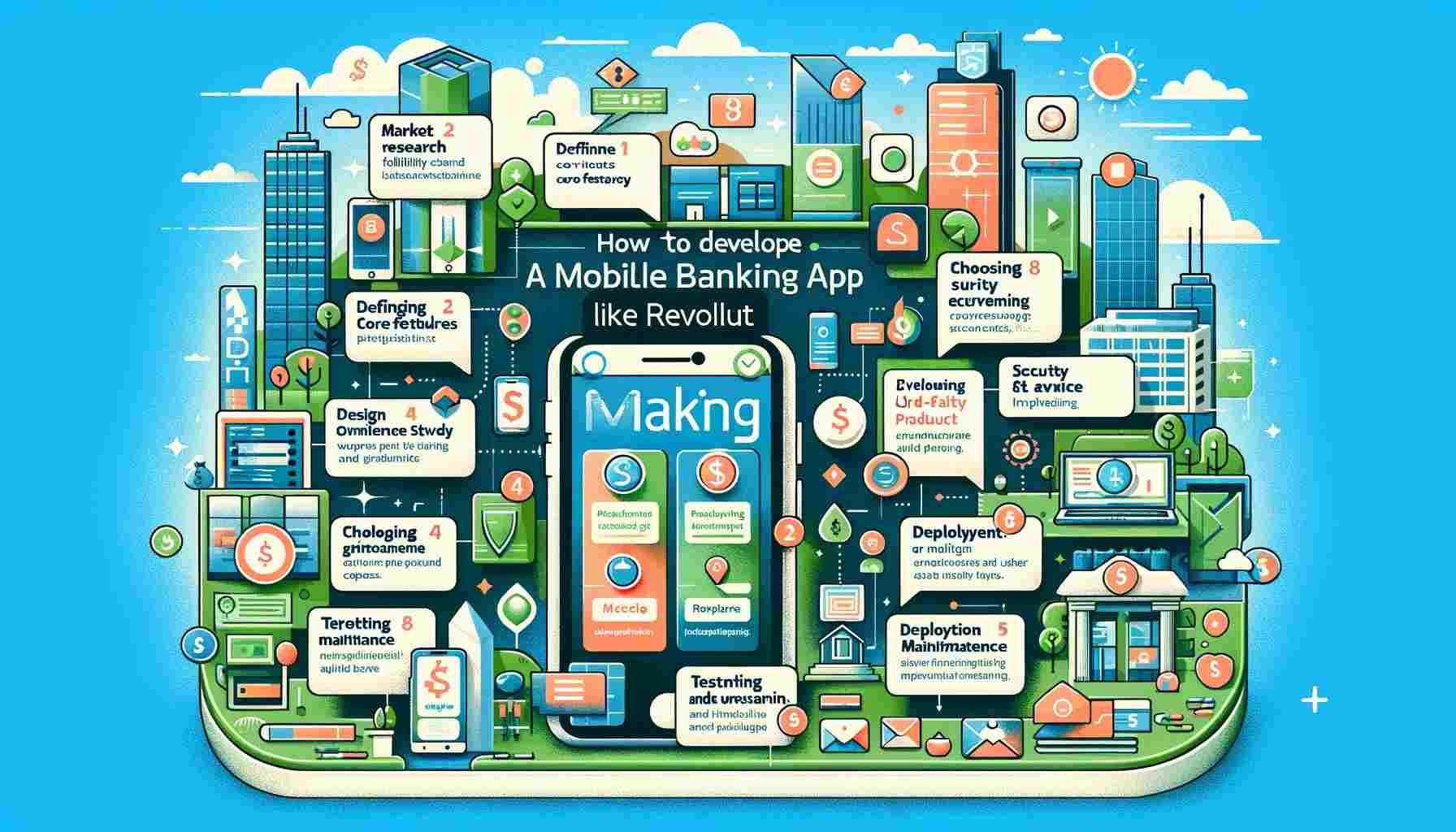
Making a mobile banking app like Revolut requires careful planning. It also needs a deep understanding of finance and strong technology. Revolut’s success is based on its easy design. It has many features and a focus on security. Here’s a full guide on how to develop a mobile banking app. It should copy Revolut’s success.
1. Market Research and Feasibility Study
Before you start developing, do thorough market research. It will help you understand the needs and preferences of your target audience. Analyze competitors, including Revolut, to identify their strengths and weaknesses.
- Identify Target Audience: Determine the demographics and behaviors of your potential users.
- Competitive Analysis: Study existing mobile banking apps to understand market trends and gaps.
- Regulatory Compliance: Research financial regulations and compliance requirements in your target markets.
2. Define Core Features
Revolut offers many features. They improve user experience and provide financial services well. Here are some core features to consider:
- Account Management: Allow users to create and manage multiple accounts.
- Money Transfer: Enable domestic and international money transfers.
- Currency Exchange: Offer real-time currency exchange with competitive rates.
- Card Management: Provide virtual and physical debit/credit cards.
- Budgeting Tools: Include features for budgeting, spending analytics, and savings goals.
- Security Features: Implement two-factor authentication, biometric login, and real-time fraud detection.
- Notifications: Send real-time notifications for transactions, payments, and account activity.
3. Design a User-Friendly Interface
The user interface (UI) and user experience (UX) are crucial for the success of a mobile banking app. A well-designed app should be intuitive, responsive, and visually appealing.
- User-centered design: focuses on creating a seamless experience for users. It has easy navigation and accessibility.
- Consistent Branding: Ensure the app’s design aligns with your brand’s identity.
- Interactive Elements: Use animations and interactive elements to enhance user engagement.
4. Choose the Right Technology Stack
Picking the right tech stack is key. It’s key for the app’s speed, security, and growth. Consider the following:
- Frontend Development: Use React Native, Flutter, or Swift for iOS and Kotlin for Android.
- Backend Development: Opt for robust technologies like Node.js, Python (Django/Flask), or Ruby on Rails.
- Database: Use secure and scalable databases such as PostgreSQL or MongoDB.
- Use cloud platforms like AWS
5. Security and Compliance
Security is paramount in mobile banking applications. Implement stringent security measures to protect user data and comply with financial regulations.
- Data Encryption: Ensure all data transmitted between the app and server is encrypted.
- Secure Authentication: Use multi-factor authentication and biometric verification.
- Follow PCI DSS Compliance. It is the Payment Card Industry Data Security Standard for handling payment information.
- Regular Audits: Conduct regular security audits and vulnerability assessments.
6. Develop MVP (Minimum Viable Product)
Start with a Minimum Viable Product (MVP) to validate your concept and gather user feedback. An MVP includes essential features that address the primary needs of your users.
- Prioritize Features: Focus on the core functionalities that provide the most value.
- User Feedback: Launch the MVP to a select group of users and gather feedback for improvements.
- Iterative Development: Use an iterative approach. Add features and enhancements based on user feedback.
7. Integrate Third-Party Services
Enhance your app’s functionality by integrating third-party services. This can save development time and provide additional features.
- Payment Gateways: Integrate with payment gateways like Stripe or PayPal.
- Use Currency Exchange APIs. Use ones like Open Exchange Rates or XE. They provide real-time currency conversion.
- Chat Support: Implement chat support using services like Intercom or Zendesk.
8. Testing and Quality Assurance
Thorough testing is vital. It ensures the app works right. It gives a smooth user experience.
- Automated Testing: Automated testing tools are used for functional, performance, and security testing.
- Manual Testing: Conduct manual testing to identify UI/UX issues and ensure usability.
- Beta Testing: Release the app to a small group of users for beta testing. Do this to gather feedback and find any issues.
9. Deployment and Maintenance
After testing, put the app in the app stores. There is one for Apple and one for Google. Ensure you have a plan for ongoing maintenance and updates.
- App Store Optimization (ASO) means optimizing the app’s listing. This is to make it more visible and get more downloads.
- Monitoring: Use monitoring tools to track the app’s performance and user activity.
- Regular Updates are crucial. They add new features, improve speed, and fix issues.
10. Marketing and User Acquisition
Develop a comprehensive marketing strategy to promote your app and attract users.
- Social Media Marketing: Leverage social media platforms to reach your target audience.
- Content Marketing: Create informative content highlighting the app’s features and benefits.
- Influencer Partnerships: Collaborate with influencers to promote your app.
- Referral Programs: Implement referral programs to encourage existing users to invite new users.
Conclusion
A smart approach is needed to develop a mobile banking app like Revolut. It must combine market research, user-focused design, strong tech, and strict security. To stand out, develop a mobile banking app that delivers value to users. Offer innovative features and a seamless experience. We will keep improving. This will be based on user feedback and tech advancements. It will keep the app useful to users.
